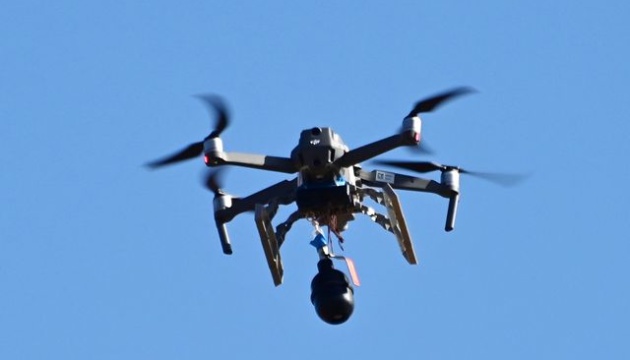Kremlin using diplomacy with US to divert attention from war in Ukraine – ISW
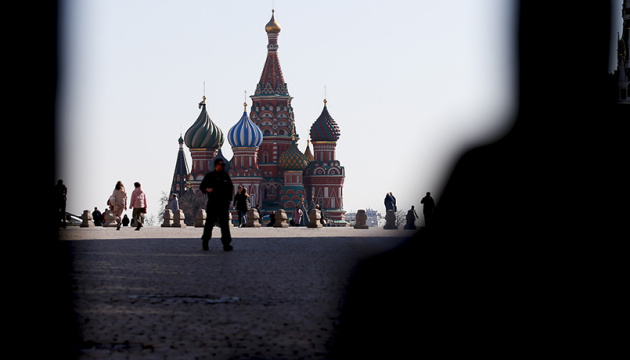



In an interview with The Telegraph, General Sir Patrick Sanders warned that the government needs to act swiftly to improve national resilience

© PA Archive

© BBC


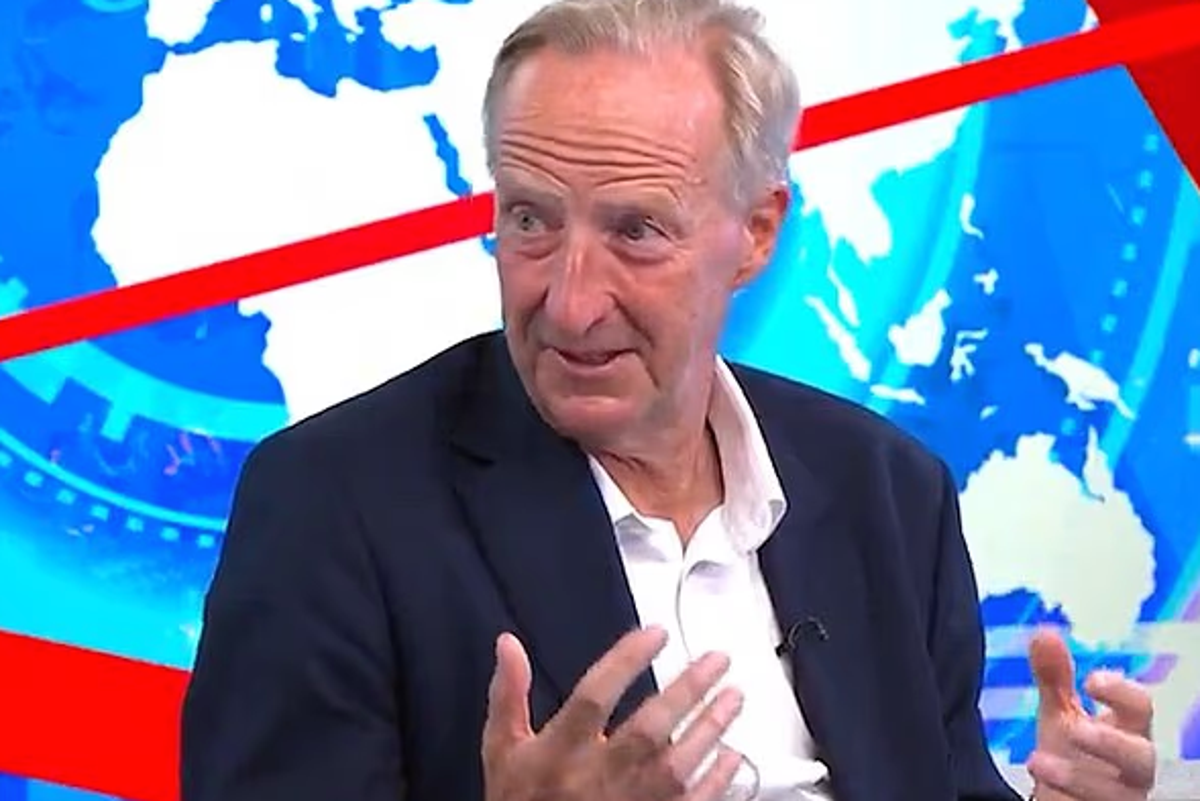
The former boss of MI6 has said that Vladimir Putin has played Donald Trump “like a violin” in the past but now the US president is his “only answer.”

© BBC
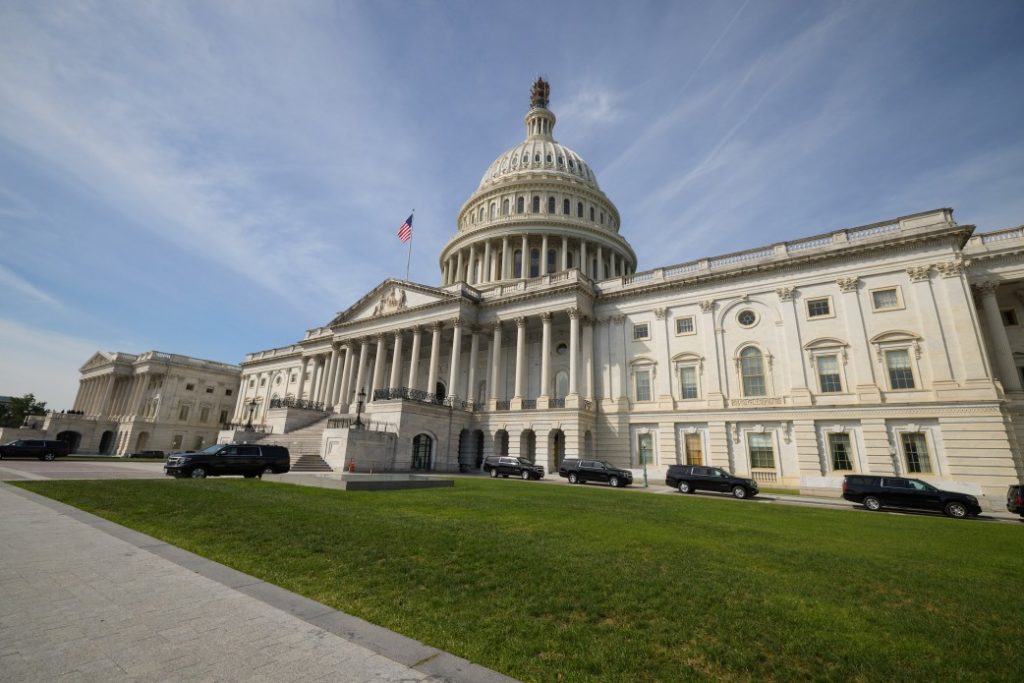

The $500 million Ukraine aid bill advanced in the US Senate after the Armed Services Committee approved it, according to The Hill. The package cleared its first major hurdle this week with strong bipartisan support from the Senate Armed Services Committee. The legislation adds $200 million for 2026 and extends the Pentagon’s Ukraine assistance program through 2028.
The Hill reported on 11 July that the Senate Armed Services Committee (SASC) approved the $500 million Ukraine aid bill two days earlier as part of the fiscal 2026 National Defense Authorization Act (NDAA). The vote passed 26–1. The bill includes a $200 million increase in Ukraine aid for 2026 and extends the Ukraine Security Assistance Initiative through 2028.
As part of broader coordination, NATO member states have earlier agreed to raise their defense spending to 5% of GDP — a long-standing demand from Trump. This shift comes as the European Union moves to implement a $162 million readiness initiative aimed at rearming European forces within five years.
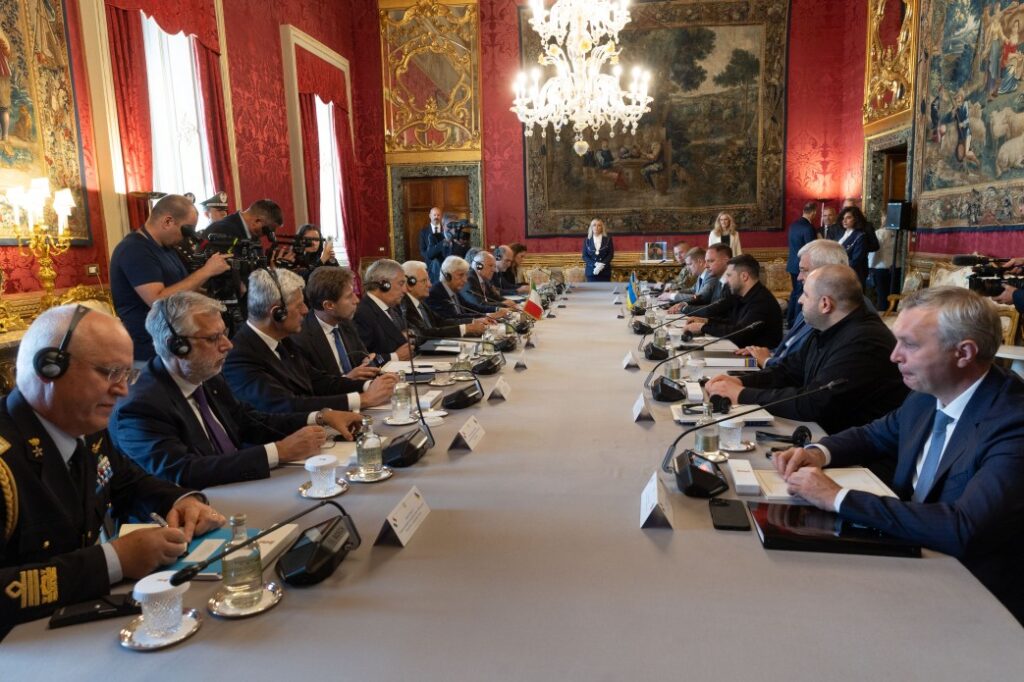

Ukraine’s allies prepare real countermeasures against Russian terror at the Ukraine Recovery Conference in Rome. On 10–11 July in Italy, the Ukraine Recovery Conference brought together a broad and high-level international delegation of over 6,000 to 8,000 participants from around 70 countries and 100 government delegations.
Key outcomes of bilateral meetings in Rome:
Not all decisions and agreements were announced publicly. Some remained classified due to the risk that Russia could exploit this information.
Also, during the Ukraine Recovery Conference, the “Coalition of the Willing” met. Around 30 key countries and partners participated, including French President Emmanuel Macron and UK Prime Minister Keir Starmer, who joined remotely via video.
For the first time, US representatives took part: Special Presidential Envoy Keith Kellogg, and Senators Lindsey Graham and Richard Blumenthal. They are co-authors of the bipartisan Sanctioning Russia Act of 2025 (S.1241), which aims to increase sanctions pressure on Russia.
Kyiv to set up gunpowder production in US after Rome recovery conference
The main idea of the bill is to impose 500% tariffs on imports into the US from countries that continue to purchase Russian energy resources, such as oil, gas, uranium, and other raw materials. The goal is to economically isolate Russia and force countries around the world to stop supporting its war machine.
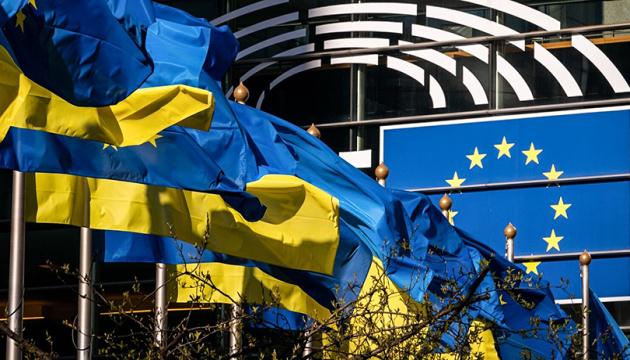

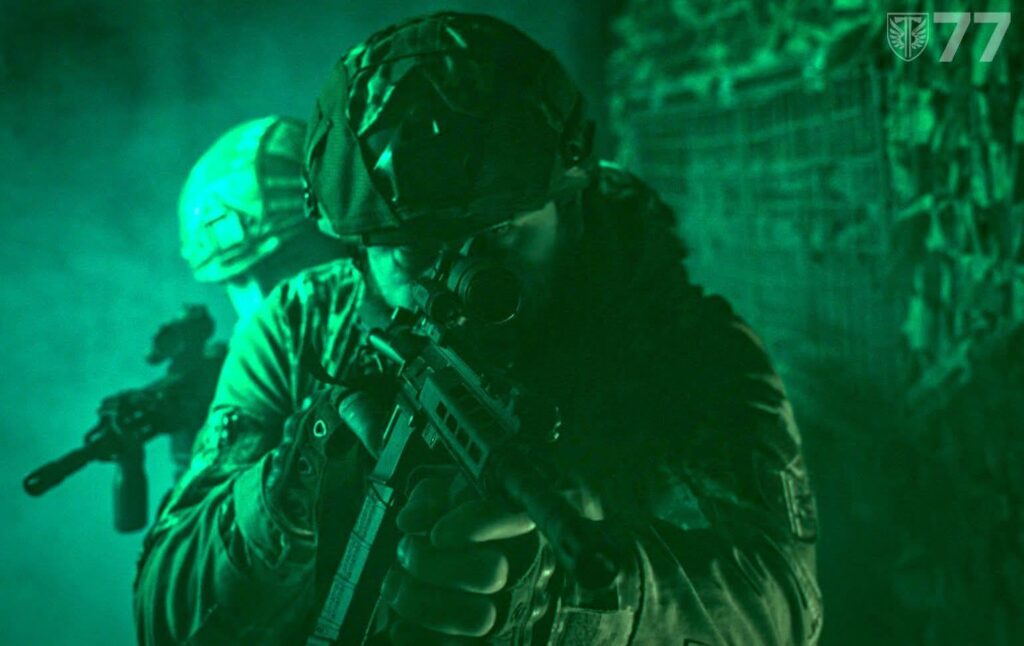

They are brave fighters who have already proven their strength on the battlefield. In the Ukrainian 47th Mechanized Brigade Magura, a reconnaissance and strike group composed mainly of Colombian volunteers has been formed.
They are a part of the International Legion of Ukraine, a military unit within the Ukrainian Ground Forces, composed of foreign volunteers. Formed in 2022, the legion has attracted thousands of foreign volunteers from over 50 countries, including the US, UK, and Canada, to fight against Russian aggression.
A video showcasing this unit of Colombian volunteers was published by ArmyInform.
The company commander, known as Hamlet, personally organized the arrival of foreign volunteers, including Colombians and fighters from Peru, Brazil, Zimbabwe, Italy, and Mexico. Ukrainian state programs allow them to quickly undergo training and integrate into the Ukrainian Armed Forces.
“The work of the Colombian assault troops shows excellent results and significantly helps on the battlefield. They have already fought alongside elite Russian brigades and North Korean special forces in Kursk Oblast,” the command of the Colombian assault company states.
They have also been described as “brave and humane,” who retrieve their wounded comrades and injured Ukrainians from the frontline, and are ready to carry out essential missions.
Earlier, BBC Russian Service identified the names of 523 foreign mercenaries killed fighting for Russia against Ukraine, using only open-source confirmations.
The outlet reported that those were from 28 countries and died in Ukraine during Russia’s full-scale invasion. The database relies strictly on publicly available information, including Russian official announcements, social media posts by family members, and grave photographs. It excludes Ukrainian sources and Western intelligence.


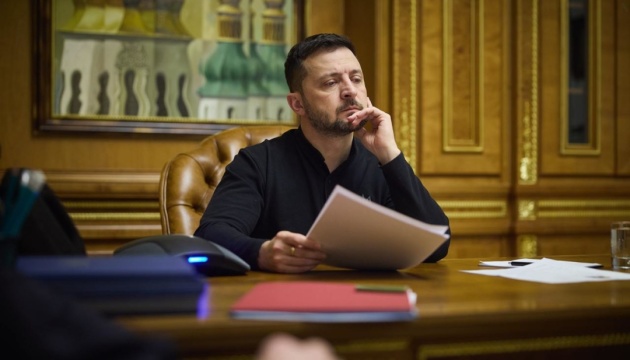



Kyiv will manufacture gunpowder on US soil. On 11 July, Ukraine signed a relevant deal with its American counterparts during the Ukraine Recovery Conference in Rome, Oleksandr Kamyshin, presidential advisor, has announced, UkrInform reports.
Kamyshyn has explained that the company involved in the production has already been engaged in projects with Ukraine. He says such cooperation seemed “an unattainable goal just two years ago.”
“Now we’re entering a systematic, proper, and ongoing format of joint work,” he adds.
Kamyshin has also revealed more than five defense-related deals, some classified as public and others classified. Intergovernmental agreements, a memorandum between Ukraine’s Council of Arms Manufacturers and the Italian Association of Arms Manufacturers, and company-to-company deals are among them.
One of the agreements was signed by US General Keith Kellogg, a special envoy of US President Donald Trump.
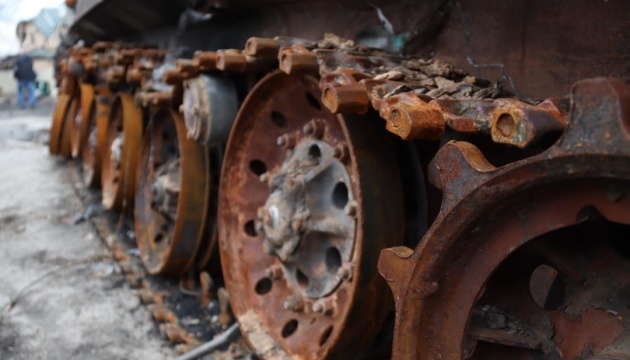



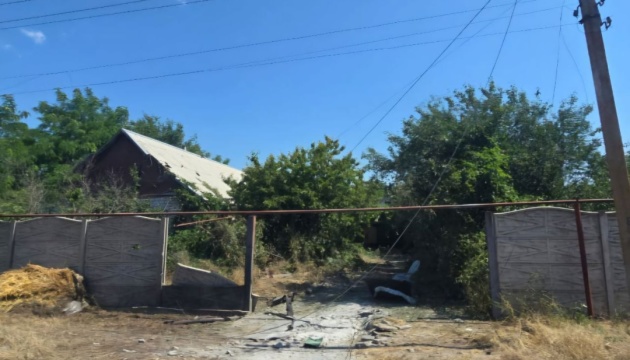





The US has thousands of outdated missiles that could immediately save Ukraine. Instead of being disposed of, these significant missile stocks could be transferred to Ukraine at no additional cost, says Former Commander-in-Chief of the Armed Forces of Ukraine, Valerii Zaluzhnyi, Ukrainska Pravda reports.
Zaluzhnyi notes that despite efforts to maintain support for Ukraine, European countries have proven unprepared for the rapid transformation of their defense industries, lagging behind Russia and primarily the capabilities of the US. He says some European countries are preparing for war as it was during World War II, burdening their budgets and failing to understand that the war since 2022 is of a different kind.
Moreover, in conditions of geopolitical instability, the very structure of Europe is expected to change. He states that European leaders fear their own electorates, who are not ready for worsening living conditions.
“Under such circumstances, expectations for long-term and, most importantly, urgently needed assistance should be approached with great caution,” he claims.
At the same time, the US remains a country of virtually unlimited capabilities and the world’s most developed economy.
“Today, the US holds significant stocks of outdated or soon-to-be-decommissioned missiles, the transfer of which to Ukraine could be an effective solution,” emphasizes the former Ukrainian commander-in-chief.
This armament requires no additional budget costs for disposal and is critically necessary for Ukraine.
By the end of 2023, the US had produced over 170,000 Hellfire missiles of various modifications. A significant portion of these munitions were manufactured between 1998 and 2018. They typically have a service life of 20 to 25 years, after which they require official write-off or disposal.
Furthermore, as part of a long-term Pentagon program, there is a gradual transition to the new JAGM missile system, which is replacing Hellfire both operationally and in production.
Therefore, Zaluzhnyi suggests that many of the outdated weapons will be either disposed of or transferred to other allied countries.
“Ukraine can take advantage of this opportunity by systematically submitting official requests under various programs, justifying the need for urgent reinforcement of its defense capability and guaranteeing the US’s rational management of the stockpiles,” he concludes.
Earlier, sources reported that Trump planned to send Ukraine weapons through NATO. The proposed route would involve selling arms to the allies, who would then pass them on to Ukraine. The suggestion had already been discussed with European partners and Ukraine.
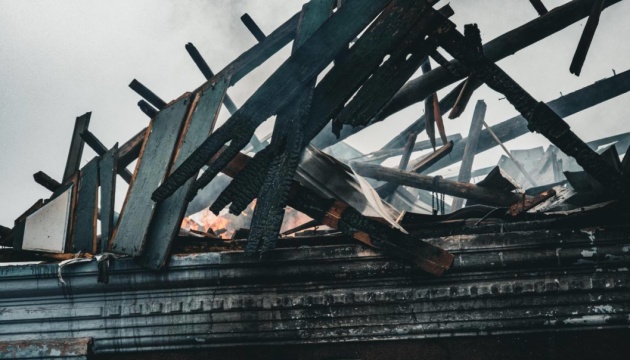


“Ask the Senate majority leader why he is not bringing it to the floor,” said Sen. Elizabeth Warren. “Is he afraid of Donald Trump?”

© Copyright 2023 The Associated Press. All rights reserved.
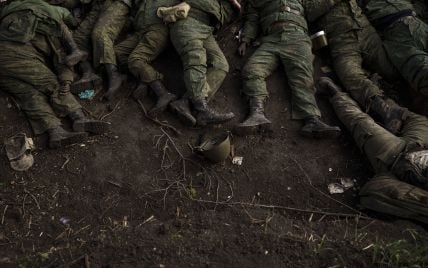

Russia suffering heavy losses for minor gains in Ukraine as summer offensive grinds on, ISW reports. The Institute for the Study of War says Moscow is throwing troops into battle for minimal territorial returns, citing The Economist’s data.
Russia is suffering heavy losses for minor gains, according to the Institute for the Study of War (ISW). In its 10 July assessment, ISW said Russian forces continue to burn through manpower at “staggeringly high” rates for “disproportionately small gains.”
Since the launch of Russia’s Summer 2025 offensive on 1 May, The Economist estimated about 31,000 Russian troops have been killed. In that time, Russia gained only 0.038 square kilometers — about nine acres — for each killed soldier.
Ukrainian Presidential Office Deputy Head Pavlo Palisa said that as of 4 June, Russia was losing around 167 killed or wounded troops per square kilometer of advance — or just 1.45 acres per casualty.
ISW reported that Russian forces captured 498.53 square kilometers in May and 466.71 in June, averaging 15.8 square kilometers per day. The Economist found a similar daily rate — about the size of Los Angeles International Airport.

At that pace, The Economist estimated it would take 89 years for Russia to seize all of Ukraine. Capturing the remainder of Luhansk, Donetsk, Kherson, and Zaporizhzhia oblasts — which Russia illegally claims — would take until February 2028.
ISW noted the pace is unusually fast compared to earlier phases of the war but stressed it is unlikely to continue. Gains have fluctuated based on weather, terrain, and the scale of operations.
ISW said Russian advances will likely slow again as autumn rains return. Mud and poor conditions have repeatedly hindered maneuverability during earlier phases of the war.
Despite the recent surge, Russia suffering heavy losses for minor gains remains the core dynamic of this campaign. ISW’s analysis, supported by The Economist’s casualty estimates, shows a war strategy trading lives for inches.
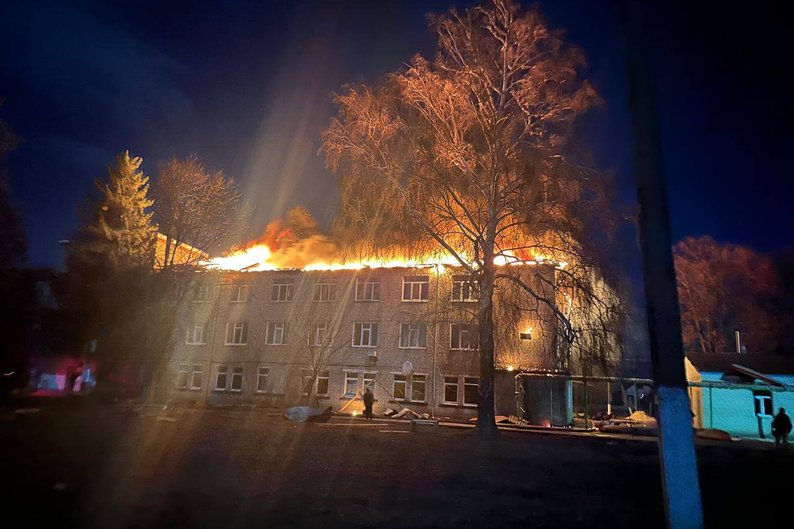

Russia is attempting to trade business cooperation with the US in exchange for concessions in its war against Kyiv. At the same time, Moscow relentlessly attacks civilians, killing women and children with record numbers of drones, demanding Ukraine’s surrender, the Institute for the Study of War (ISW) reports.
“The Kremlin continues efforts to use its diplomatic engagements with the United States in an effort to divert attention from the war in Ukraine and toward the potential restoration of US-Russian relations,” experts conclude.
According to the Russian Foreign Ministry’s statement on the Rubio-Lavrov meeting, they discussed bilateral US-Russia issues unrelated to the war in Ukraine, including the restoration of contacts, economic and humanitarian cooperation, direct air travel, and the work of diplomatic missions.
The Russian Foreign Ministry also said that the US and Russia will continue dialogue on a “growing range of issues of mutual interest.”
Russian Deputy Foreign Minister Sergey Ryabkov said on 10 July that he sees no slowdown in the development of US-Russia relations.
The day before the meeting, Russian Foreign Ministry spokesperson Maria Zakharova reaffirmed Russia’s initial military demands for regime change in Ukraine and demilitarization. Kremlin spokesperson Dmitry Peskov again stated that Moscow insists on recognizing the “realities on the ground.”
“Kremlin officials’ public statements continue to demonstrate that Russia remains committed to achieving its original war goals in Ukraine and is not interested in good faith negotiations to end the war, however,” the ISW writes.
The analysts emphasize that Kremlin officials often urge Ukraine to accept the “realities on the ground,” meaning the current frontline in Ukraine, implying Russia holds a stronger negotiating position due to the battlefield situation. They also demand that Ukraine concede to Russian demands to change its government, stop arms deliveries, and reduce its army.


BBC Russian Service identified names of 523 foreign mercenaries killed fighting for Russia against Ukraine, using only open-source confirmations. The outlet says those were from 28 countries and died in Ukraine during Russia’s full-scale invasion. Notably, the BBC Russian Service does not refer to them as mercenaries and follows Russian state language, labeling occupied parts of eastern Ukraine as the “self-proclaimed Donbas republics” or the “self-proclaimed DNR and LNR.”
According to a joint investigation by the BBC Russian Service and Mediazona, supported by a volunteer group, the names of 118,139 Russian military dead have been confirmed since the invasion began. Included in that figure are 523 foreign nationals who did not hold Russian citizenship at the time of enlistment.
The database relies strictly on publicly available information, including Russian official announcements, social media posts by family members, and grave photographs. It excludes Ukrainian sources and Western intelligence.
The highest confirmed number of foreign mercenaries killed fighting for Russia came from Tajikistan (72 deaths) and Uzbekistan (66 deaths). In both cases, more than half had previously been incarcerated in Russian penal colonies. Many signed contracts with Wagner Group in exchange for sentence cancellation.
The BBC Russian Service believes North Korea likely has the highest number of foreign dead, but has not identified a single name due to Pyongyang’s secrecy and lack of social media use.
Nepal had the highest confirmed number of indentified fighters killed. The BBC Russian Service documented 70 Nepali nationals killed fighting for Russia, with around 50 more missing. Nepalese authorities sent DNA samples to Russia to help identify the bodies.
The first known Nepali fatality was Sandip Tapalia, a 30-year-old former Gurkha who died in June 2023. He was buried in Ivanovo.
One of the most publicly documented cases involves Ahmed Valed Deraz, a 25-year-old Egyptian model based in Yekaterinburg. Social media shows him living and working there since at least 2021. He last applied for modeling work in June 2023. At some point after that, he signed a military contract and was eliminated on 17 March 2024 in Ukraine.
He was one of four Egyptians confirmed dead fighting for Russia.
Russia also recruited from Sri Lanka, where at least 288 former soldiers joined the Russian military, according to that country’s government. Sixteen were confirmed killed.
The list also includes individuals from Ethiopia, Zambia, the Central African Republic, Tanzania, and Togo.
Americans appear in the list as well. One of the most notable cases is Michael Gloss, son of a serving CIA deputy director, eliminated in Ukraine fighting for Russia.
US intelligence estimates only a handful of American nationals fought for Russia. In contrast, 2,000–3,000 US citizens reportedly joined Ukrainian forces.
The BBC Russian Service listed 54 Ukrainian citizens who died fighting for Russia. These only the Ukrainian nationals, registered in the Ukrainian-controlled territory at the time the full-scale invasion began. This figure does not include individuals from the occupied territories, counted separately.
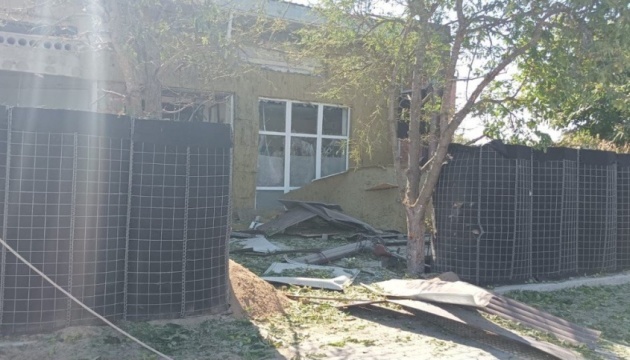

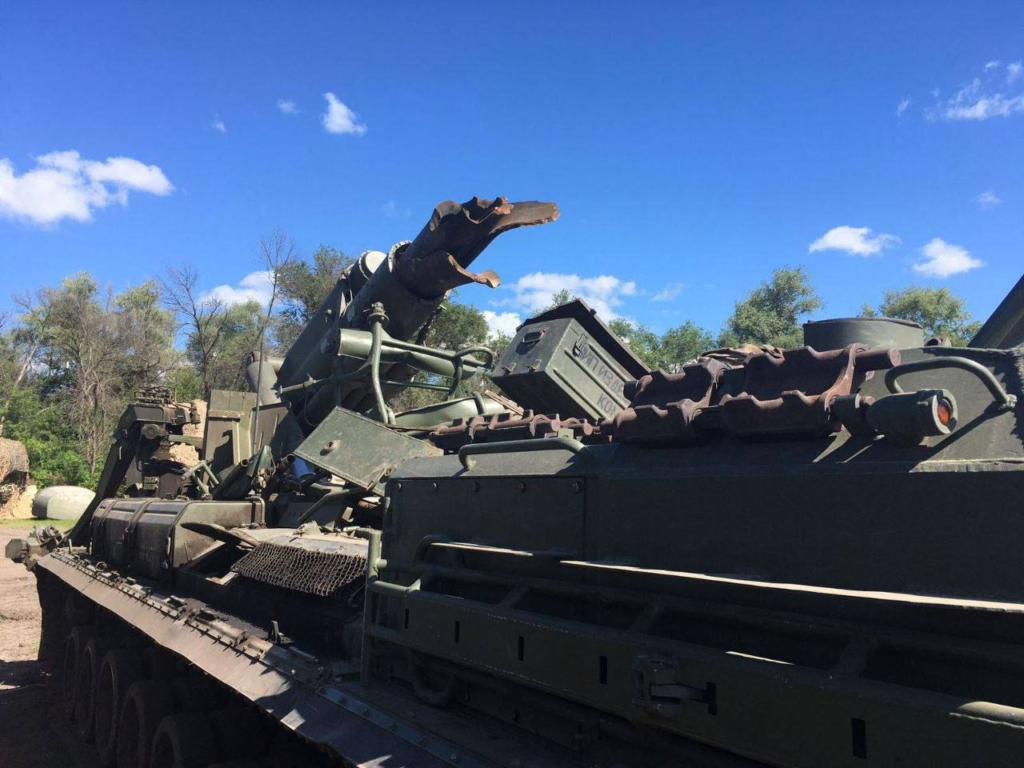

If not for a Spanish company, Russia could have run out of new artillery barrels. Barcelona-based Forward Technical Trade SL supplied at least one radial forging machine to Russia, initially built by the Austrian firm Gesellschaft für Fertigungstechnik und Maschinenbau (GFM), the Insider reports.
Since early 2024, Ukraine has destroyed over 19,000 Russian artillery systems, contributing to a total loss of nearly 30,000 systems over the entire war. The attacks have reduced Russia’s artillery superiority from a 10:1 ratio to about 2:1. Meanwhile, Kyiv and Moscow are turning to drones for faster, more precise strikes, reshaping how the war is fought.
The equipment, valued at $1.3 million, weighs 110 tons and was manufactured in 1983. The transfer reportedly occurred via a Hong Kong-based intermediary, Scorpion’s Holding Group Limited.
GFM denies any direct business ties with either the Spanish supplier or the Hong Kong firm. However, the UK’s Royal United Services Institute (RUSI) confirms that GFM machines are crucial for barrel manufacturing in Russia — and that the Russian defense industry remains entirely dependent on them.
According to US-based expert Pavel Luzin, Russia cannot produce these forging machines domestically. Facing severe shortages, Russian forces have already begun “cannibalizing” old Soviet stockpiles, endangering frontline performance.
Earlier, Ukraine’s Defense Intelligence reported that the West still had not sanctioned 70 Russian companies behind the production of missiles that struck Kyiv’s largest children’s cancer hospital.
The Okhmatdyt strike occurred the same day Indian Prime Minister Narendra Modi met with Russian President Vladimir Putin in Moscow on 8-9 July 2024, calling for a peaceful resolution to the war. While the two leaders spoke of peace, Russian missiles rained down across Ukraine, killing 47 people, including 33 in Kyiv.

Technology is Ukraine’s chance to win the war. This is why we’re launching the David vs. Goliath defense blog to support Ukrainian engineers who are creating innovative battlefield solutions and are inviting you to join us on the journey.
Our platform will showcase the Ukrainian defense tech underdogs who are Ukraine’s hope to win in the war against Russia, giving them the much-needed visibility to connect them with crucial expertise, funding, and international support. Together, we can give David the best fighting chance he has.
Join us in building this platform—become a Euromaidan Press Patron. As little as $5 monthly will boost strategic innovations that could succeed where traditional approaches have failed.
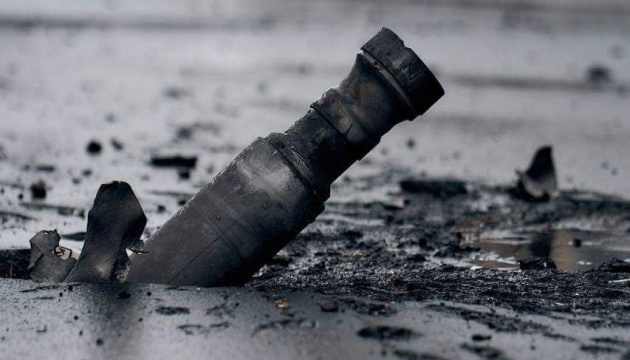

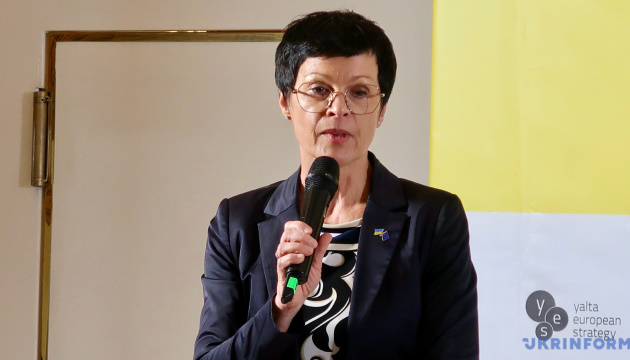



© © Copyright 2024 The Philadelphia Inquirer
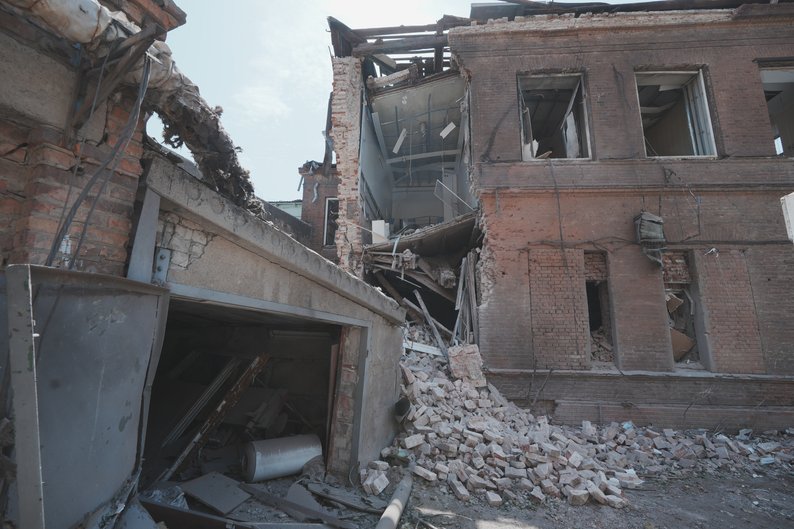

Russia’s weaker but destructive drone attack injured at least 27 civilians overnight as strikes hit Odesa, Kharkiv, Chuhuiv, and other cities overnight and in the morning of 11 July, local authorities reported. A separate Russian artillery attack on a medical facility injured at least three more people in Kherson Oblast.
Ukraine’s Air Force reported that Russian forces launched 79 drones, including Shahed explosive one-way attack drones and decoys, from Kursk, Millerovo, and Primorsko-Akhtarsk.
Air defenses reportedly shot down 44 drones, and 16 more were suppressed by electronic warfare and disappeared from radars. Nineteen reached their targets across at least eight locations. Debris also fell in three other areas, the report says.
In Kharkiv, three explosions occurred around 05:25. According to the Emergency Service, at least 11 people were injured. A dental clinic was hit, and 17 buildings were damaged, with around 200 windows shattered.
One Russian drone strike hit a maternity hospital, forcing staff to evacuate seven patients, three children, and 13 personnel. Medical director Oleksandr Kondratskyi told Suspilne everyone inside experienced severe stress. The blast shattered windows and doors, dislodged ceiling lights, and damaged medical equipment. Staff canceled a scheduled operation due to the destruction.
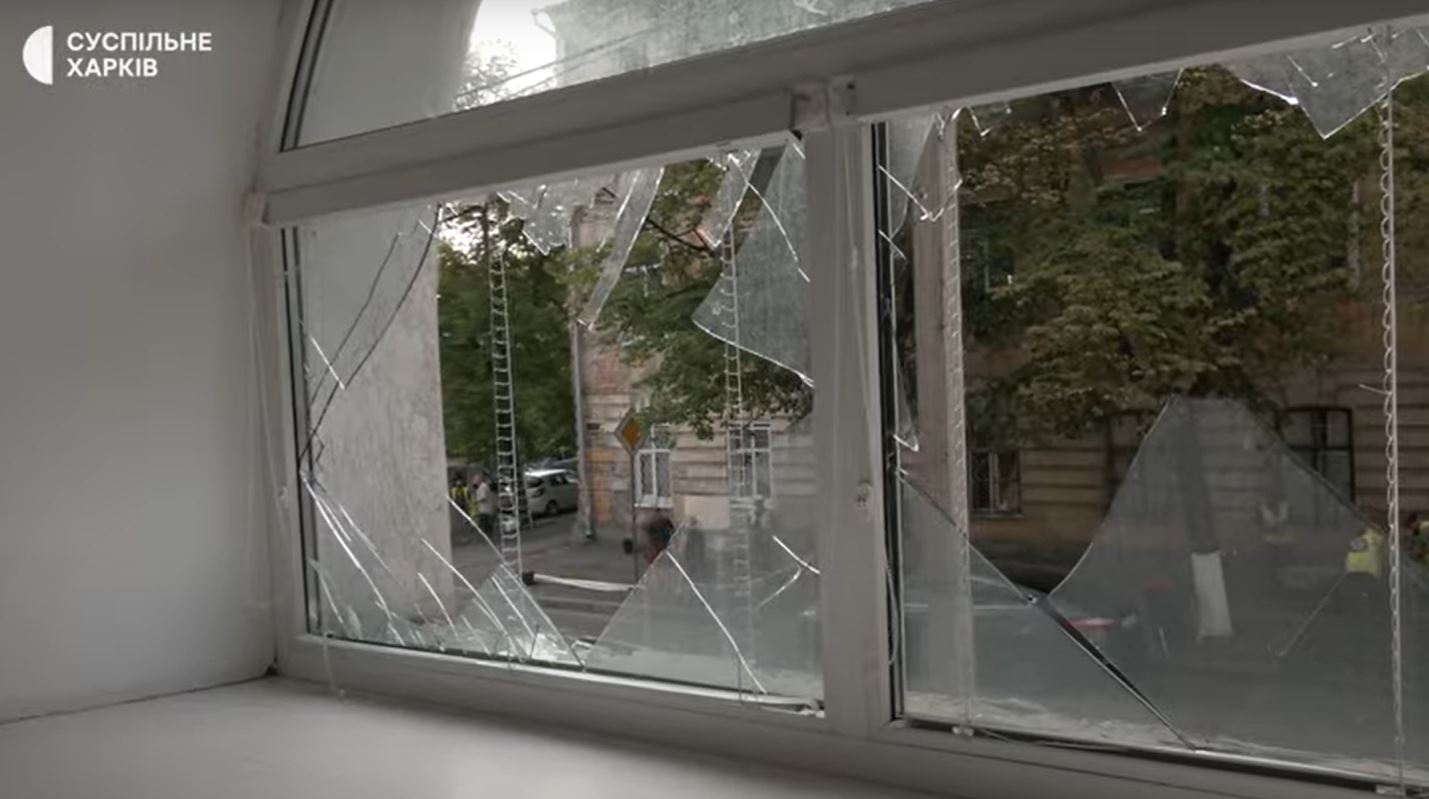
In Chuhuiv, Kharkiv Oblast, explosions shook the city around 01:20. The blasts injured four people, including a 65-year-old woman. Drones destroyed two detached houses, damaged several others nearby, and heavily damaged the city hospital.
Mayor Halyna Minayeva confirmed further drone impacts on private households in another district. Six drones also struck an industrial site, causing a fire, according to Oblast head Oleh Syniehubov.
In Odesa, authorities issued an air alert at 09:19. Five explosions rocked the city as drones struck residential buildings, administrative facilities, and a stable. Local officials reported that 11 civilians were injured.
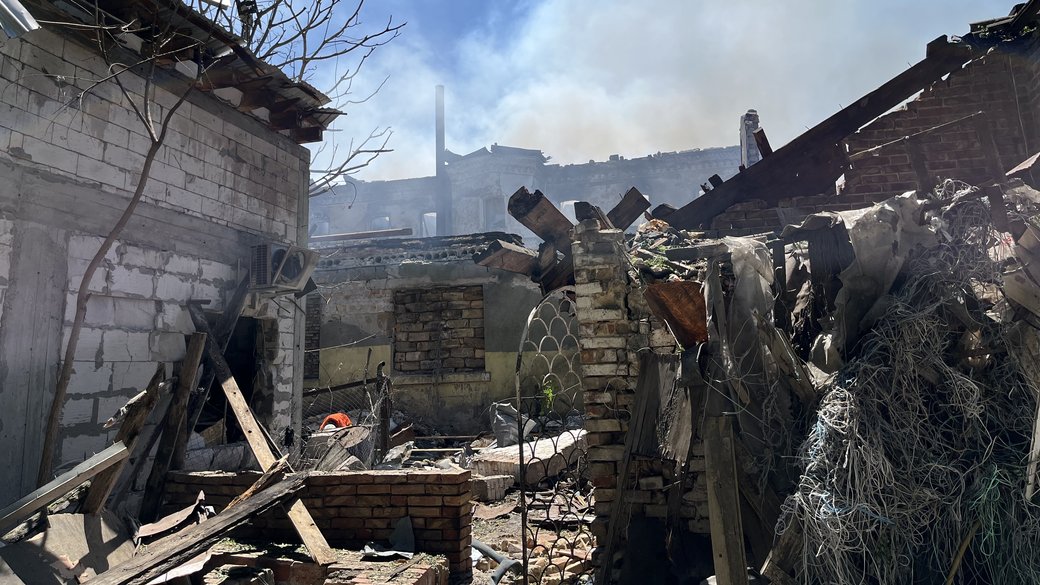
A drone strike on the stable killed a mare named Kameliia and wounded another horse. At the time of the attack, five horses and four ponies were inside the building.
Russian drones struck Sumy early in the morning, the regional authorities reported. One drone injured a 62-year-old woman while she stood in her yard; medics are currently treating her. The blasts damaged non-residential buildings on the outskirts of the city. Environmental officials reported that debris from the attack contaminated 1,190 square meters of land.
In Bilozerka, Russian artillery struck a medical facility, wounding three people: a 40-year-old male patient with leg injuries, a nurse born in 1978 with wounds to her legs, head, and arms, and a driver born in 1976 with hand injuries. All are receiving medical care.
Explosions were heard in Mykolaiv after 01:30 during an air raid alert. Mayor Oleksandr Sienkevych and regional head Vitalii Kim confirmed multiple blasts and a fire on the city’s outskirts. No injuries were reported.
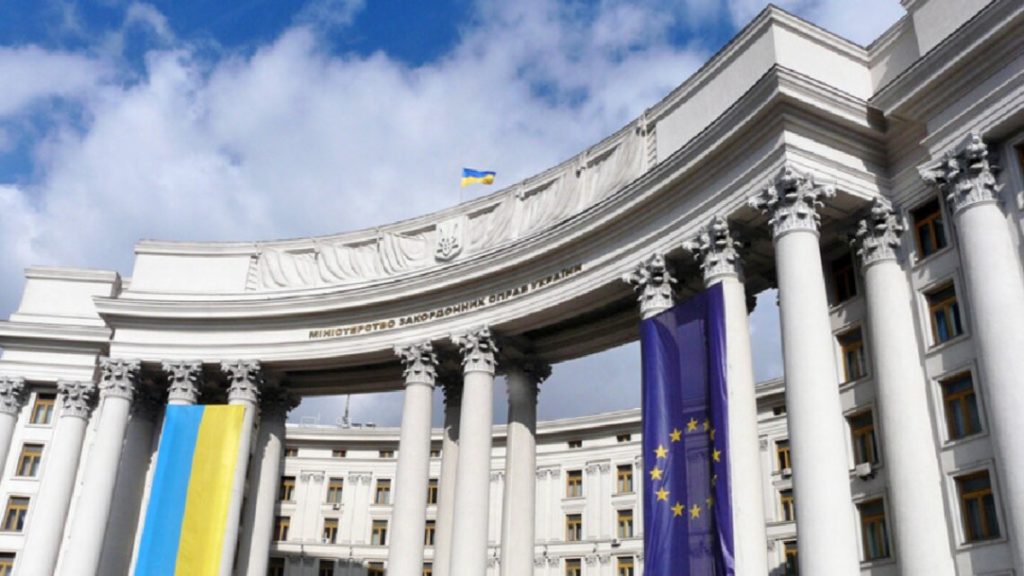

Stability in Ukraine is in China’s own interest, and Beijing holds the most powerful levers to influence Moscow and urge Russian ruler Vladimir Putin to end the war, Ukrainian Foreign Ministry spokesperson Heorhii Tykhyi says, according to UkrInform.
In July 2025, European Commission President Ursula von der Leyen warned that the future of the EU’s policy toward China would rely on Beijing’s involvement in supporting Russia’s war efforts. Moscow is dependent on supplies of Chinese components for both tactical and long-range drones. This allows Moscow to narrow the technological and production gap with Ukraine in the drone sector. The cooperation poses a threat to the European Union, said von der Leyen.
Tykhyi calls on China, which has been called the main sponsor of Russia’s war, to view Ukraine not merely as another European country, but as a future member of the European Union. He emphasizes that “Ukraine–China relations are ongoing, dialogue exists.” Kyiv is also openly responding to instances of Chinese citizens participating in combat on Russia’s side or engaging in acts of industrial espionage.
For instance, on 9 July, Kyiv detained two Chinese nationals, accused of attempting to steal classified documentation on Ukraine’s Neptune anti-ship missile system. The weapon that sank Russia’s flagship Moskva.
The younger suspect studied at a Kyiv technical university until 2023, when he was expelled for poor grades. Instead of returning to China, he stayed in Ukraine. The SBU suggests he used his remaining contacts to target someone with access to advanced weapons development.
“Recently, Chinese nationals were detained for gathering sensitive information about Ukrainian weapons. These facts are not being concealed,” the spokesperson says, adding that such incidents damage bilateral relations, and Ukraine cannot ignore threats amid all-out war.
Earlier, Chinese Foreign Minister Wang Yi told a senior EU diplomat that China “cannot accept” Russia’s defeat in the war against Ukraine, arguing that such an outcome would allow the US to focus its foreign policy on Beijing. However, this does not fully indicate that Beijing is focused on Moscow’s victory.
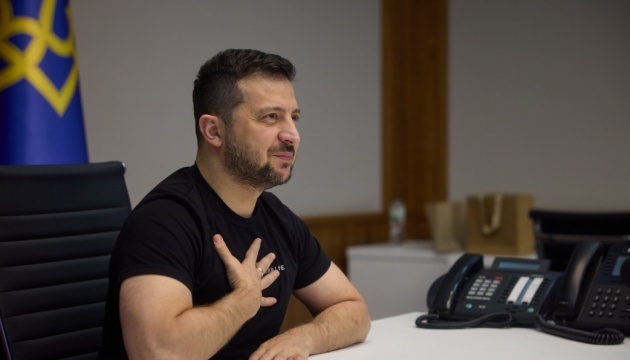

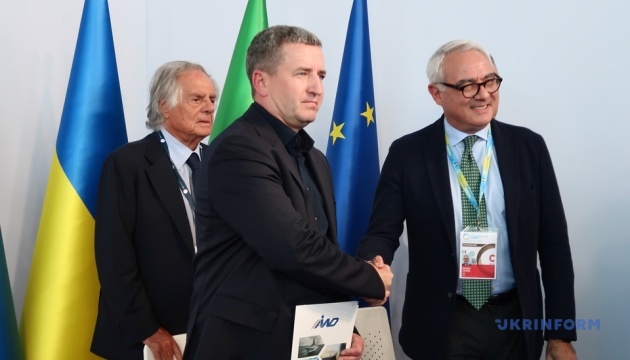

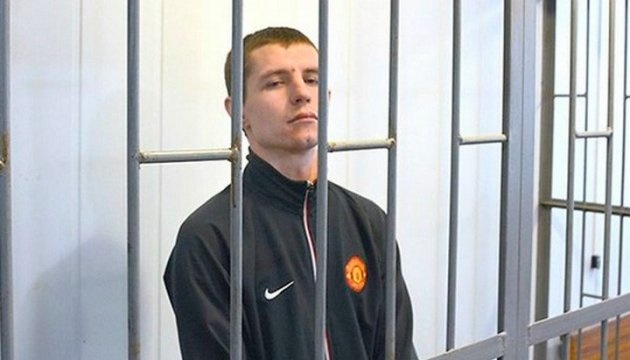

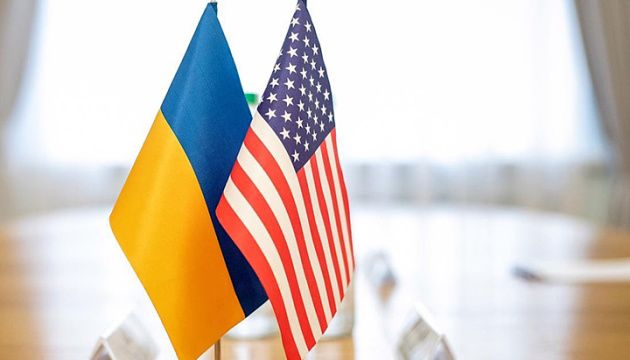

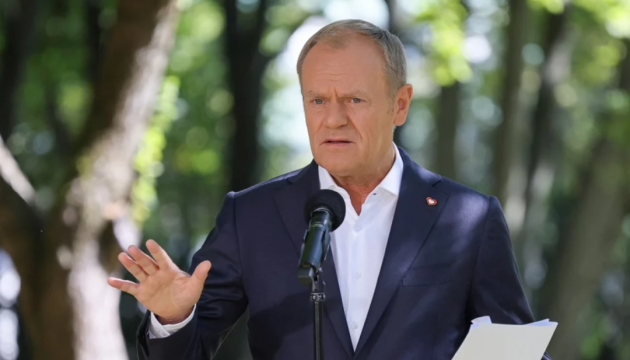

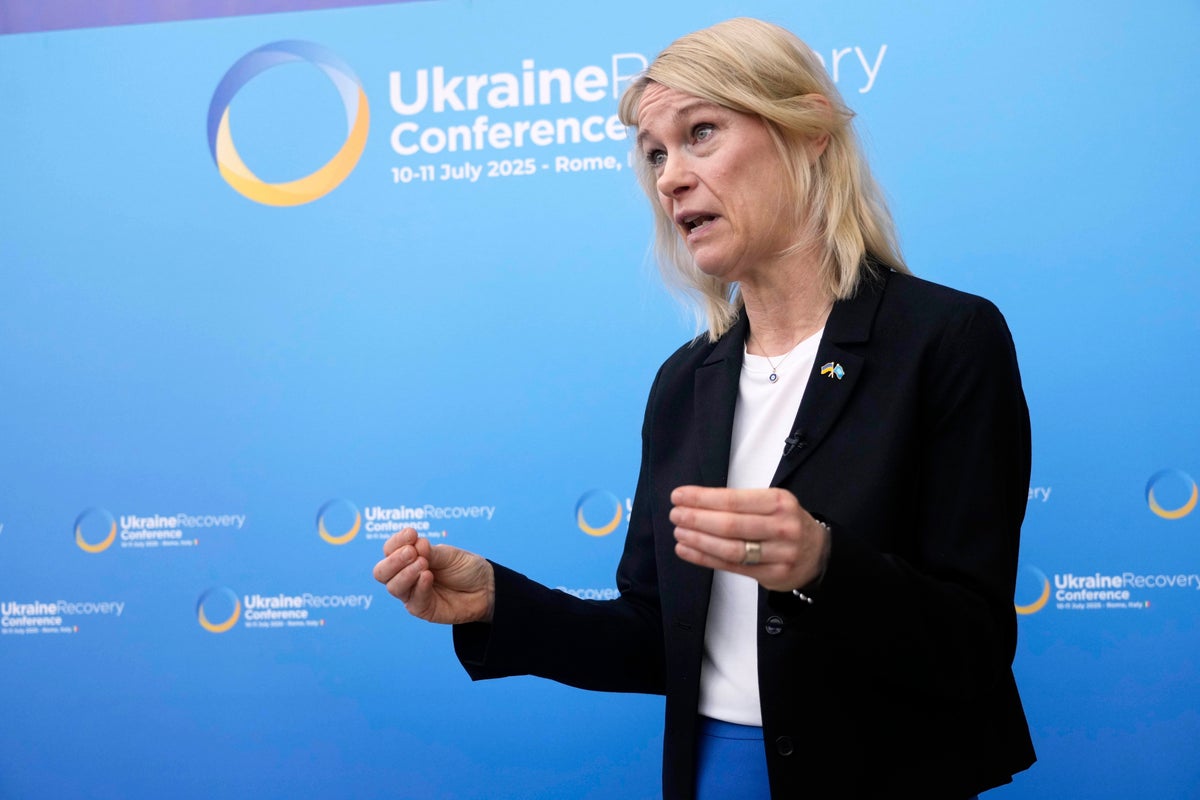

© Copyright 2025 The Associated Press. All rights reserved
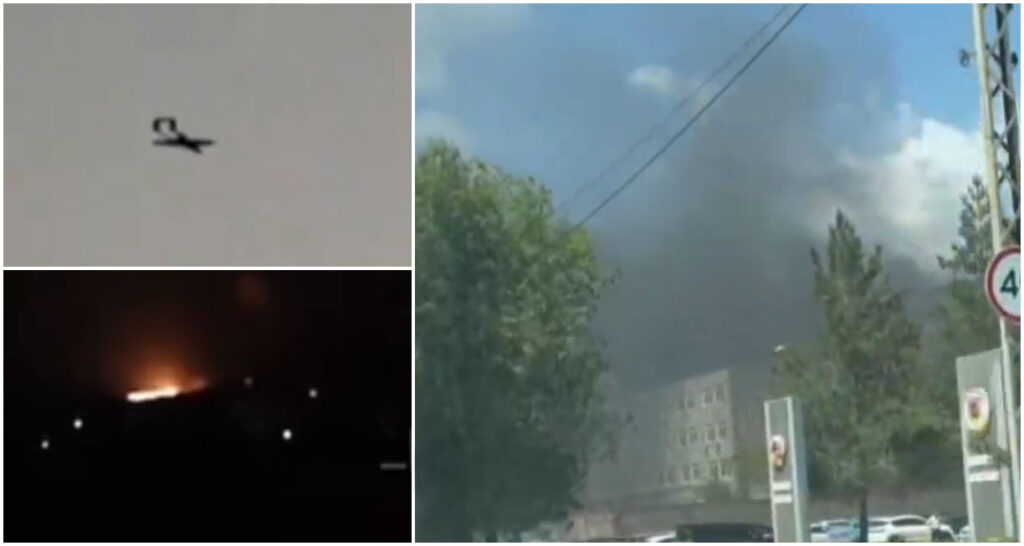

Ukraine hits four weapons factories in Tula, a regional capital next to Moscow, in a continuing effort to degrade Russia’s defense production capabilities. The drone offensive also struck other military-linked sites across Moscow Oblast, Kursk, Taganrog, Lipetsk, Orsk, and beyond, according to multiple reports. The full extent of damage is currently unknown.
Four military-industrial facilities were struck in Tula and Tula Oblast overnight on 11 July, according to reporting by Russian news Telegram channel Astra.
Ukraine struck four weapons factories in Tula overnight, targeting Russia’s defense industry deep inside its territory. Drone attacks also hit sites in Moscow Oblast, Kursk, Taganrog, Lipetsk, Orsk, and more.
— Euromaidan Press (@EuromaidanPress) July 11, 2025TG/Exilenova+, Supernova+ – the clips show the Tula attack. pic.twitter.com/R9CKsNg6YS
According to Astra and Ukrainian Telegram channels, Exilenova+ and Supernova+, drones also targeted several high-value military and industrial targets in other parts of Russia overnight on 11 July.
— Euromaidan Press (@EuromaidanPress) July 11, 2025
Lukhovitsy (Moscow Oblast): Ukrainian Liutyi drones reportedly struck the Lukhovitsky Aviation Plant, part of the MiG aircraft corporation. Astra said two drones hit a compressor station, causing partial collapse of one wall.
TG/Exilenova+, Supernova+ pic.twitter.com/Fa2E386F3T
Further strikes were reported in multiple other oblasts:
— Euromaidan Press (@EuromaidanPress) July 11, 2025
Taganrog, Rostov Oblast — A UAV was allegedly neutralized near the Beriev aircraft plant.
The city’s mayor claimed that debris ostensibly fell onto the factory grounds. Such wording from local officials is often a euphemistic way to report a direct hit.
Supernova+ shared… pic.twitter.com/LzwhxNcQBP
Russia’s Ministry of Defense claimed that a total of 155 drones were downed over Russian territory and occupied Crimea during the night. According to their statement, this included 13 over Tula Oblast, 11 over Moscow Oblast, and dozens across Kursk, Bryansk, Belgorod, Smolensk, and other areas.
The General Staff of the Armed Forces of Ukraine reported that overnight on 11 July, Ukrainian drone units, together with other defense elements, struck two Russian military-industrial sites.
One target was the Lukhovitsky Aviation Plant in Moscow Oblast, which handles full-cycle MiG fighter jet production. Explosions were recorded at the site.
The second strike, carried out with support from Ukraine’s Special Operations Forces and the SBU, hit the Shipunov Design Bureau in Tula Oblast. The facility produces missiles for Russian air defense systems.
The General Staff said explosions, smoke, and emergency vehicle activity were observed near both targets. Damage is being assessed.
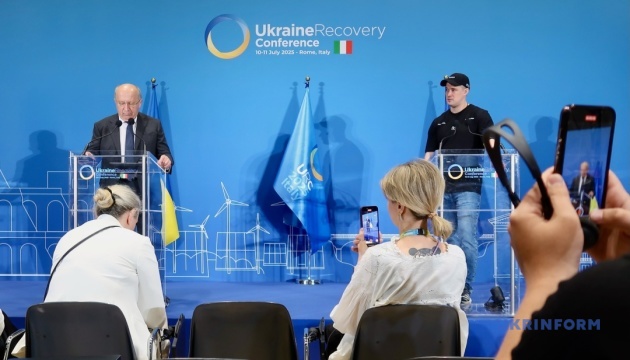

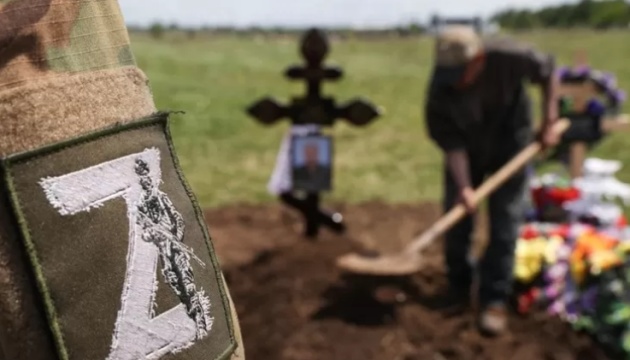



The United Kingdom is buying 5,000 Lightweight Multirole Missiles from arms firm Thales—and plans to donate them to Ukraine. The 13-kg LMM, fired one at a time from a shoulder launcher, ranges as far as 8 km under infrared guidance.
The 5,000 missiles, built at Thales’ Belfast factory, could cost as much as $3.4 billion. The UK government announced it will loan the money to the Ukrainian government—with generous repayment terms spread over 19 years.
The LMM buy, first floated in March, “is not only a major boost to the UK’s defense capabilities but will also keep Ukraine in the fight, boosting their defense against Russia’s illegal full-scale invasion,” the government in London stated.
But 5,000 missiles alone can’t keep Ukraine in the fight for very long. Russia is already overwhelming Ukraine’s air-defenses with vast numbers of explosive drones.
The LMM is just the thing to shoot down a relatively low- and slow-flying target such as Russia’s 200-kg Shahed attack drones, which range thousands of miles with 90-kg warheads.
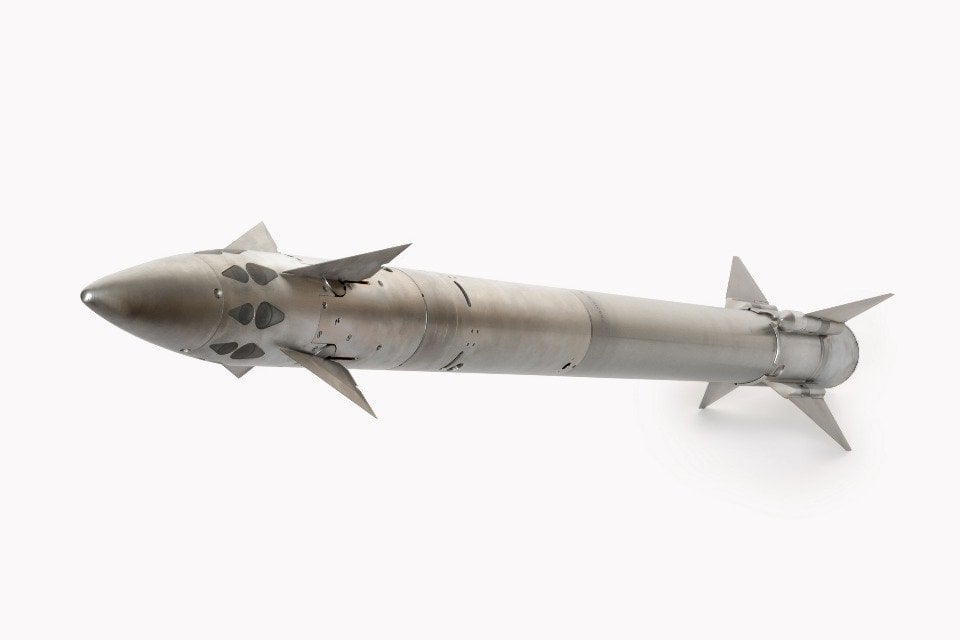
In three years, Russia has launched around 29,000 Shaheds—also known as Gerans—at Ukrainian positions and cities.
Ukrainian forces shot down or jammed most of them. But Ukraine’s air-defenses are running low—and new models of the 440-pound, propeller-driven drone have additional satellite navigation receivers, making them jam-resistant.
Meanwhile, the pace of Shahed launches is increasing—meaning more and more of the drones are striking their targets … and killing or maiming Ukrainians.
Ukrainian analysis group Frontelligence Insight crunched the numbers. “The 2,736 drones launched in June, many targeting Kyiv, make up nearly 10% of the total” number of Shaheds launched since Russia widened its war on Ukraine.
This proves “growing production,” explained the Frontelligence Insight’s founder, Tatarigami.
“This aligns with earlier warnings from Ukrainian intelligence, which estimated Russia’s monthly output at around 2,700 Shahed-type UAVs and roughly 2,500 decoys,” Tatarigami noted. The decoys distract Ukrainian defenses, helping the armed Shaheds reach their targets.
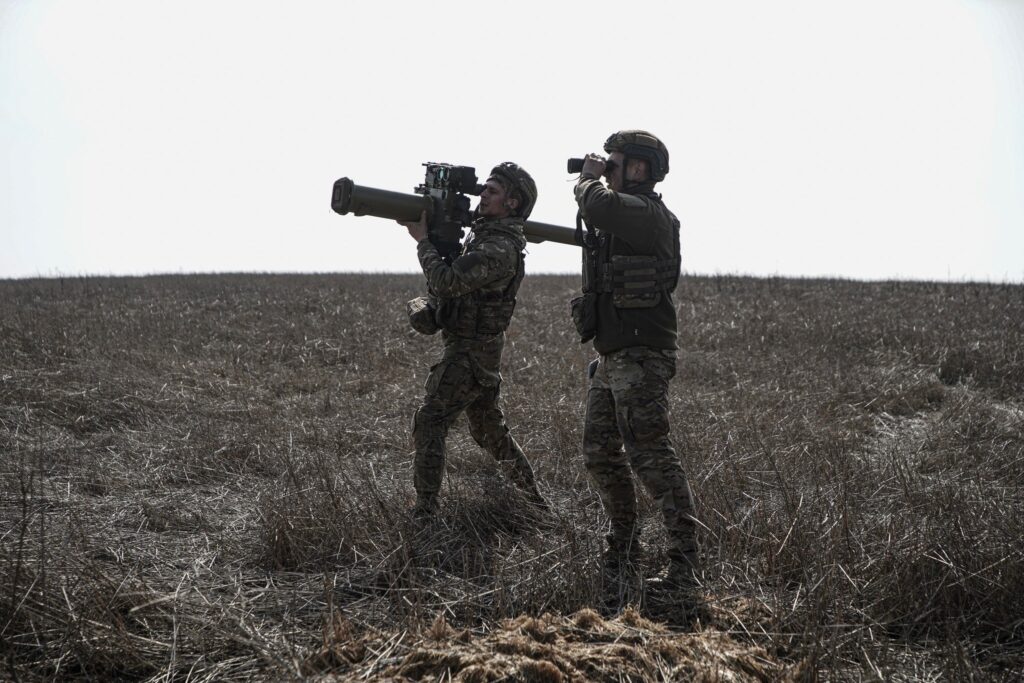
In August 2024, Ukrainian officials said Russia was producing about 500 Shaheds a month. “Since then, output has multiplied, and the drones have become deadlier: the warhead weight has increased from 50 kg to 90 kg, and maneuverability has improved,” Tatarigami wrote.
Robert Brovdi, the commander of Ukraine’s Unmanned Systems Forces, warned that Shahed production could soon exceed 1,000 per day. “I’m not intimidating anyone,” Brovdi wrote. His warning is based on “analysis of the intelligence,” he said.
“The growing scale is a serious problem for Ukraine,” Tatarigami intoned.
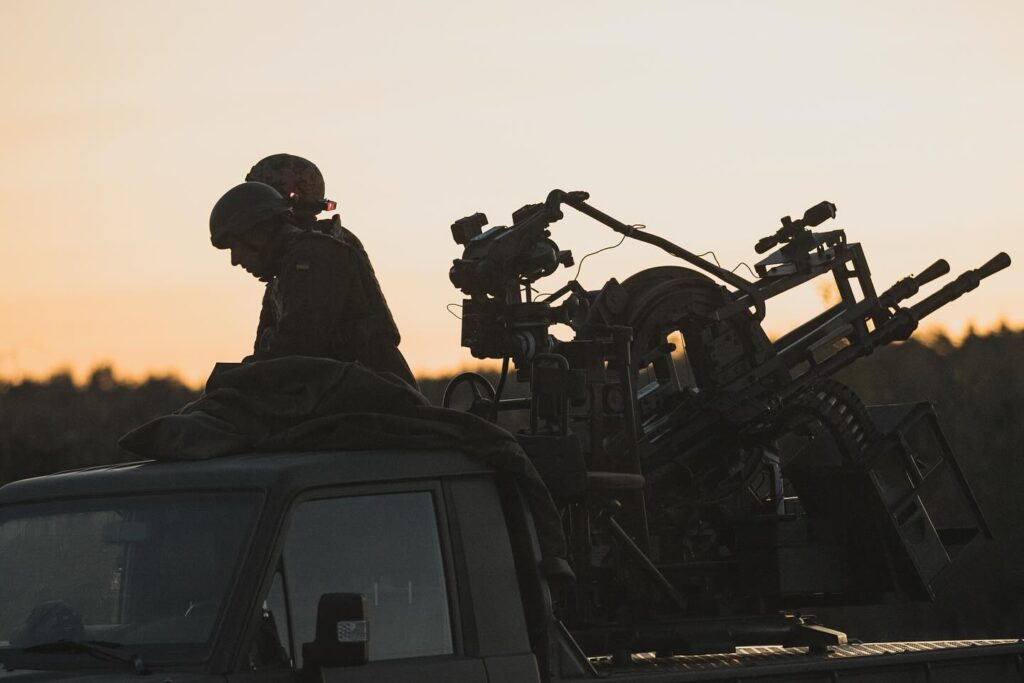
Ukraine is shooting down the drones with mobile gun teams, surface-to-air missile batteries, fighter jets, gunship helicopters and interceptor drones. It’s also sending them off course with electronic warfare systems.
But the sheer number of drones overwhelms Ukraine’s defenses. Part of the problem is that many of the munitions the Ukrainians use to down the Shaheds are more expensive than the drones are.
An LMM costs more than $500,000. A Shahed costs $200,000. 5,000 LMMs costing $3.4 billion, if they struck 100% of the time, would be enough to destroy a few weeks worth of Shaheds costing $1 billion.
For the Ukrainians, “it’s not just about increasing production” of anti-drone systems, “but also about reducing the cost per interception—making it much cheaper to intercept drones than to manufacture them,” Tatarigami explained.
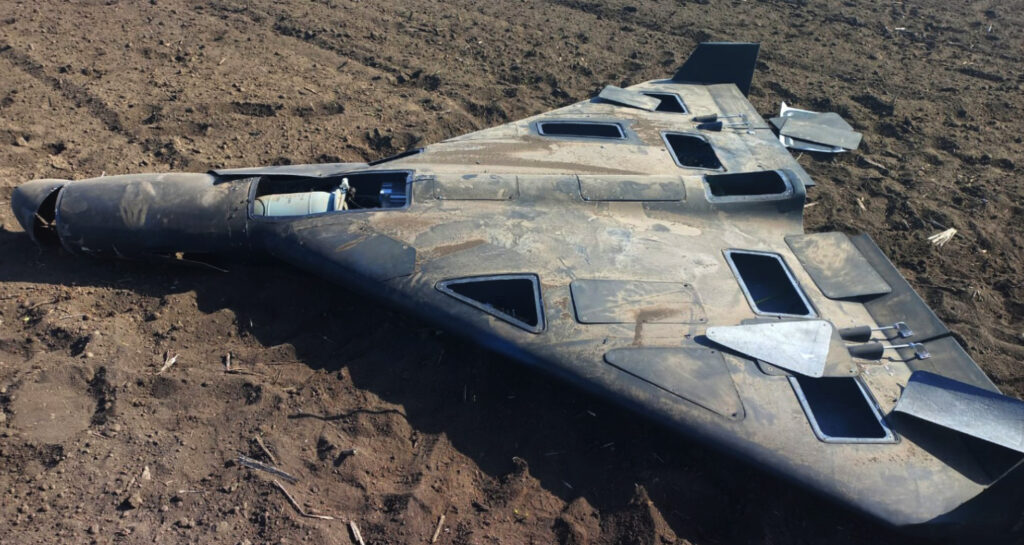
The cheapest defense is jamming. It costs roughly $8 million to surround a city with jammers such as the Night Watch electronic warfare team’s Lima. The few cities that have enjoyed Night Watch’s protection have suffered almost no Shahed strikes for months at a time.
The Russians can jam-proof a drone by adding more antennas for satellite navigation, compelling the Ukrainians to add more channels to their jammers—or risk the electronic defenses failing. Right now, the Russians are evolving their drones faster than the Ukrainians are evolving their jammers, the Night Watch rep admitted.
Asked if Ukraine was losing the war on the Shaheds, a representative of Ukraine’s Night Watch electronic warfare team responded simply. “Yes, it is.”
5,000 missiles that cost slightly too much for anti-Shahed duty may not change that.
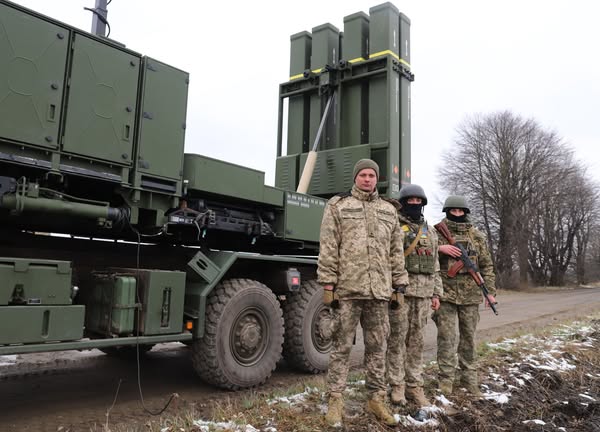


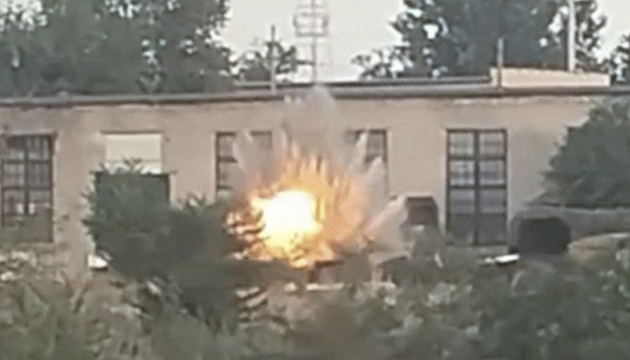


![A woman with a sign saying "Olenivka = Osvencimas [Auschwitz]" during a protest about Ukrainian POWs killed Russian colony.](https://euromaidanpress.com/wp-content/uploads/2022/08/Azovstla6-1-1024x576.jpg)
Ukraine’s human rights commissioner Dmytro Lubinets claimed the United Nations had finally accused Russia of the Olenivka prison massacre that killed Ukrainian prisoners of war (POWs). The problem? No such UN report exists.
Lubinets posted the news 30 June with obvious satisfaction. “Finally, things are called by their proper names!” he wrote, linking to what he said was a UN investigation proving Russia planned and executed the attack on the correctional colony.
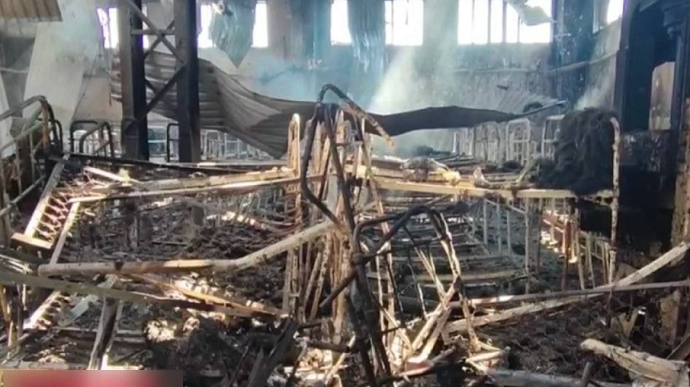
Journalists at Slidstvo.Info followed Lubinets’ link and found something odd. The source was the Centre for Human Rights in Armed Conflict—an organization that explicitly denies any UN connection. Right on their website: “We are not affiliated with the United Nations or any other intergovernmental or governmental organization.”
The website was created on 22 May 2025, and contains only the single investigation about Olenivka with no other publications or detailed organizational information.
“We conduct thorough investigations into violations of international human rights and humanitarian law during armed conflicts, with a current focus on Ukraine and Gaza, to help establish the truth and bring perpetrators to justice,” the organization’s description on the website states.
Who runs the Centre? Nobody knows. No headquarters, no leadership names, no country of operation listed.
When Slidstvo.Info contacted Lubinets’ office, his team quickly backtracked. “Unfortunately, the Ombudsman’s Secretariat did not conduct proper verification,” they admitted, removing the post and promising “enhanced control over published information.”
The Centre itself later confirmed none of its report authors worked for the UN. They described themselves as “international experts who prefer not to reveal their identities” operating without a permanent headquarters and claiming none of its experts are located in Ukraine or Russia.
The incident highlights confusion surrounding the actual status of UN investigations into the July 2022 Olenivka attack. According to Associated Press reporting, an internal UN analysis does conclude that Russia was responsible for planning and carrying out the attack, but this 100-page document was never intended for public release and does not constitute an official UN accusation.
The UN analysis examined 70 open-source images, 20 statements from Russian officials, 16 interviews with survivors broadcast on Russian television, and conducted detailed interviews with 55 released prisoners of war. The analysis determined the missile flew from east to west, contradicting Russian claims that Ukraine struck the facility with HIMARS missiles.
However, the UN dissolved its official investigation mission five months after the tragedy because Russia refused to guarantee expert safety.
Can Ukraine get justice for Olenivka? Currently, only Ukrainian prosecutors are investigating. No active international probe exists among the tens of thousands of war crimes cases.
Meanwhile, the mysterious Centre for Human Rights in Armed Conflict says it plans to publish reports on civilian casualties in Mariupol and Ukrainian military deaths since the full-scale war began —though their credibility remains questionable after the Olenivka controversy.
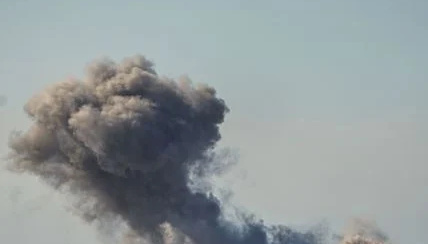



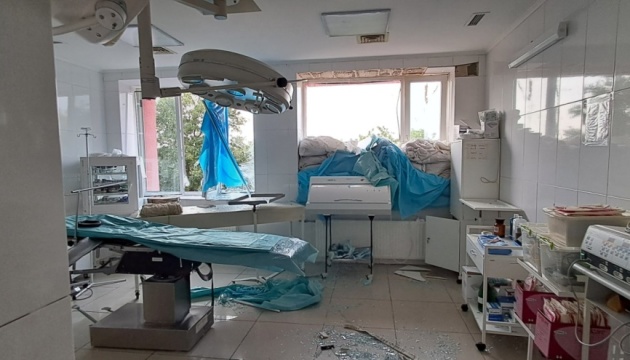

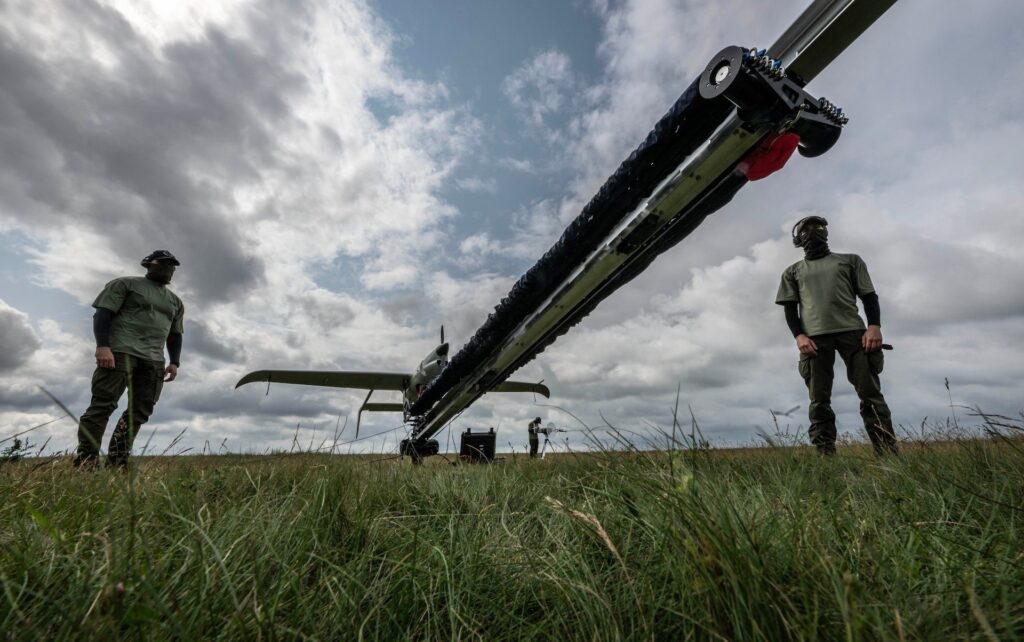

European firms stole drone secrets from a top Ukrainian manufacturer while falsely claiming their own UAVs were tested in combat, according to Skyeton CEO Roman Knyazhenko. He did not name the specific European companies allegedly involved. Skyeton’s flagship Raybird drone has flown over 350,000 combat hours, The Telegraph says.
In an interview with The Telegraph, Knyazhenko said some European manufacturers approached Skyeton under the pretense of cooperation. However, then they used the meetings to extract technical details and even plagiarized phrases from company materials.
“Sometimes I open presentations of other aircraft from Europe, and I see literally my own words, without any change,” he told the outlet.
He said firms conducted only a few drone flights far from the front line — such as in Lviv in western Ukraine — and still claimed their systems were “combat tested.” These misleading claims allowed them to secure government contracts worth billions, diverting funds from proven Ukrainian systems.
“They’re investing in technology that’s actually fake. In the end, you will have nothing,” Knyazhenko said, warning that the deception not only wastes money but also harms Ukraine’s war effort.
Skyeton, formerly focused on ultralight aircraft, now works directly with the Ukrainian army. CEO Roman Knyazhenko said roughly half the drone’s components have been replaced in recent years to enhance radar evasion and endurance. The system can reportedly fly 2,500 kilometers and stay airborne for up to 28 hours with various payloads. He added that pressure on engineers is extreme, with repairs often needed overnight to avoid leaving brigades without support.
“In peacetime, you would say a couple of weeks or a month. But right now, you have one night,” Knyazhenko said. “Because if you do not do it in one night, tomorrow the enemy will try and approach us and we will not have aircraft in the air, so we will have casualties.”
Skyeton says it had to start building more parts itself after receiving faulty imports. Knyazhenko cited one shipment of gimbal cameras where half didn’t work. Test logs showed they failed before leaving the factory, he said. The supplier denied responsibility. Legal action, Knyazhenko added, would take years — while frontline units went without equipment.
“Every day of delay will cost us millions,” Knyazhenko said, noting Skyeton’s strict government contracts and the constant demand from Ukrainian brigades.
Skyeton says it constantly refines its drones for real combat conditions. Engineers, it claims, adjusted launch systems and designed UAVs that can take off from puddles within minutes. Knyazhenko said key technologies may become obsolete in two weeks.
“Three years here feels like 20 years in peace time,” he said.
He warned that visiting a Ukrainian factory doesn’t mean firms can replicate the work. “It’s the same story as building a BMW from scratch. It takes years,” he said.
In Foreign Affairs, former Biden officials Jon Finer and David Shimer said most countries — including the US — now lag behind Ukraine in drone warfare. Knyazhenko added that instead of rebuilding systems like the Raybird, Western countries should simply fund Ukrainian production abroad.
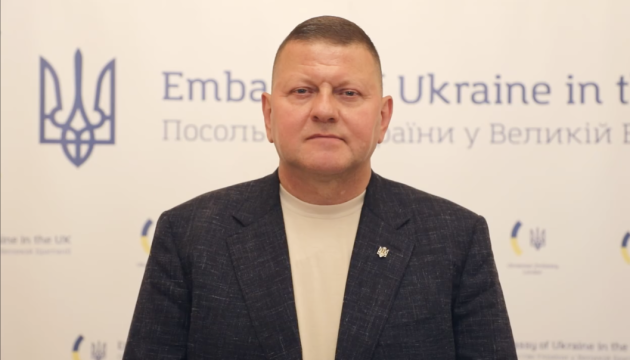

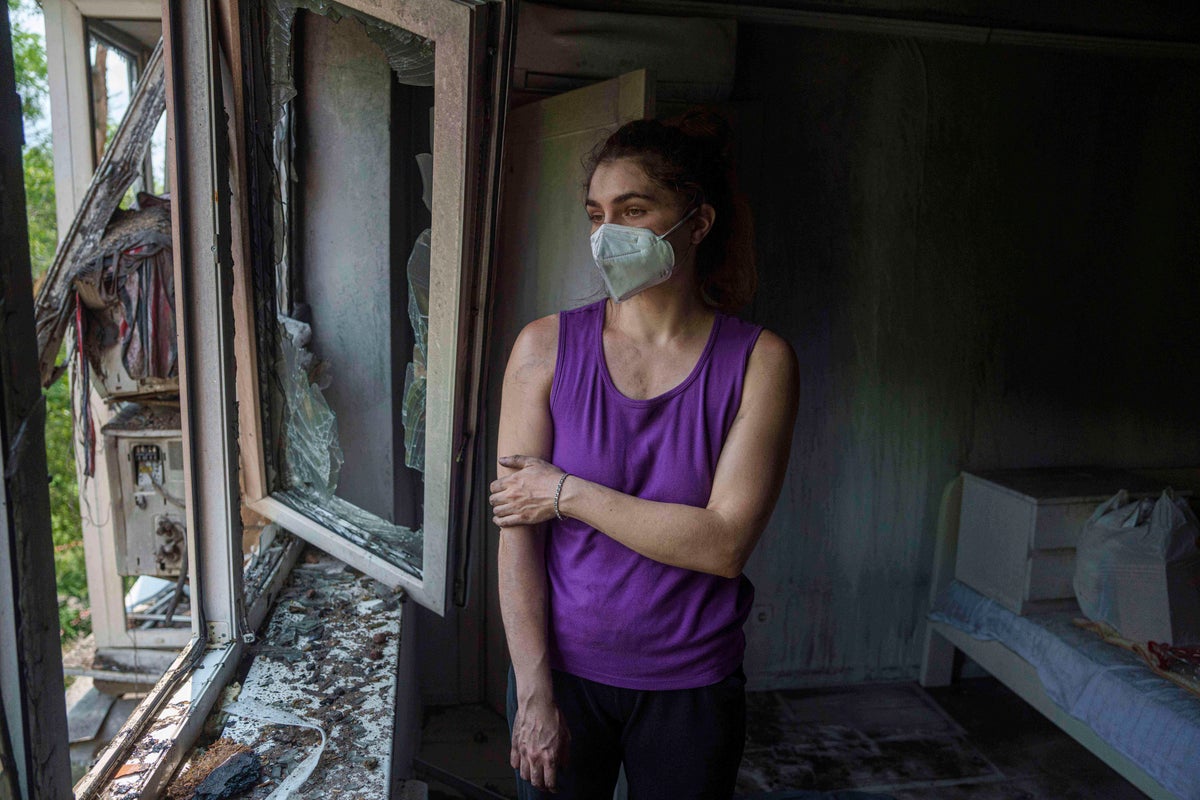

© Copyright 2025 The Associated Press. All rights reserved


